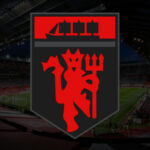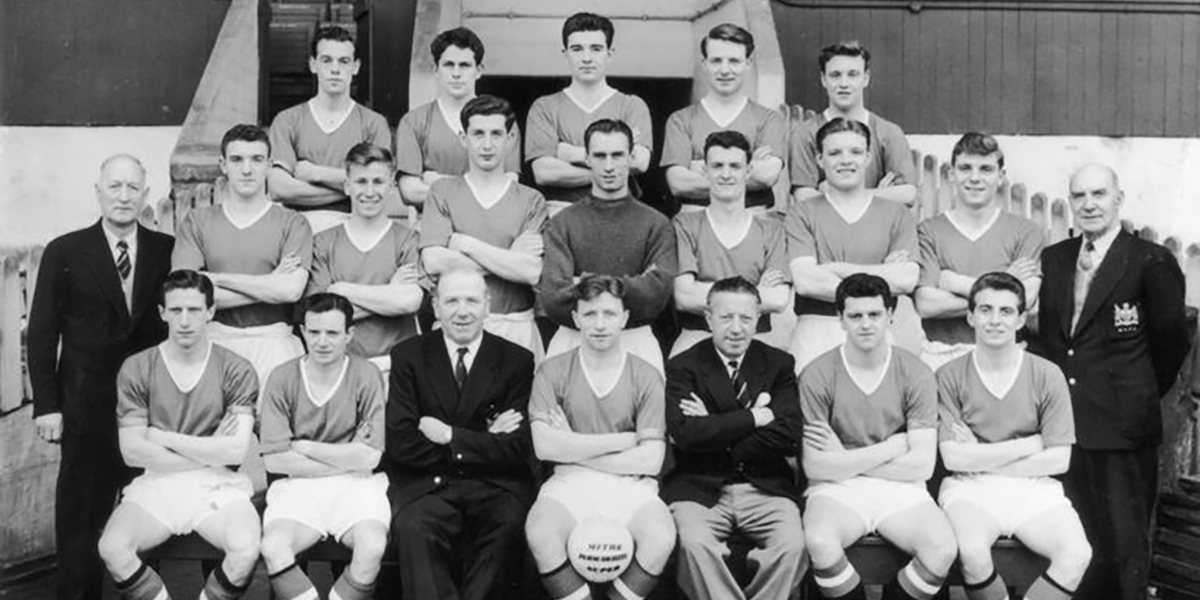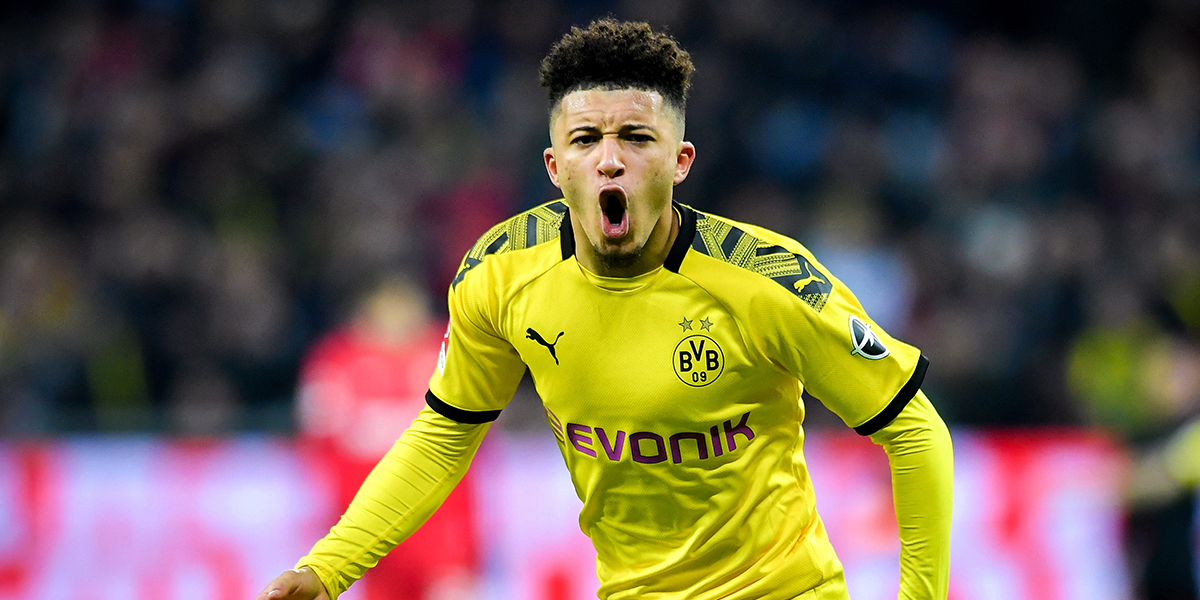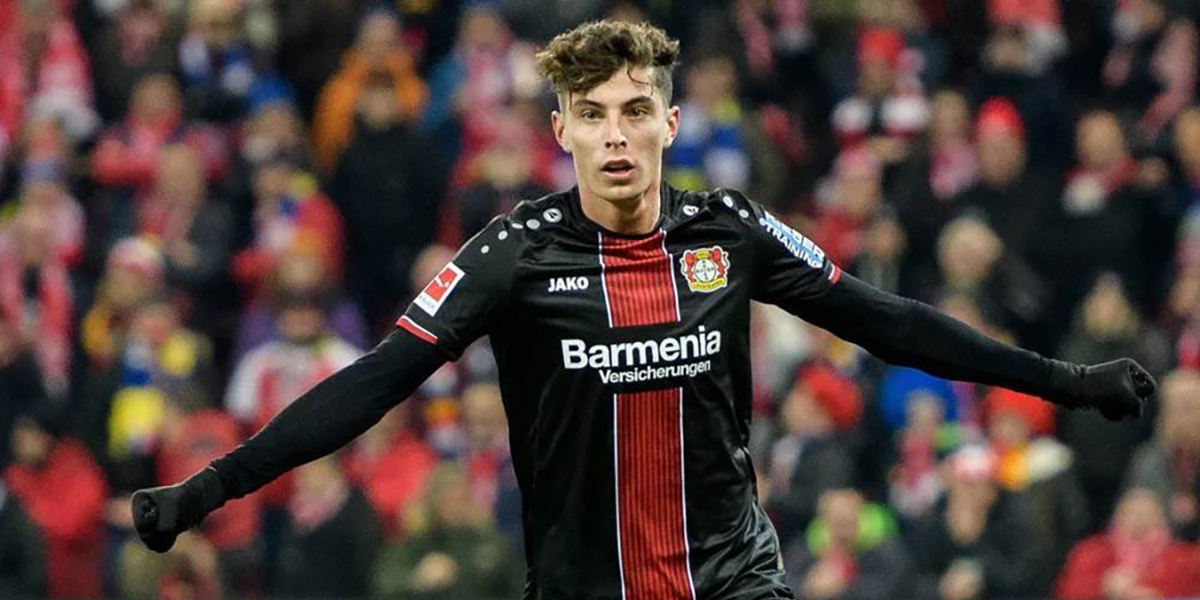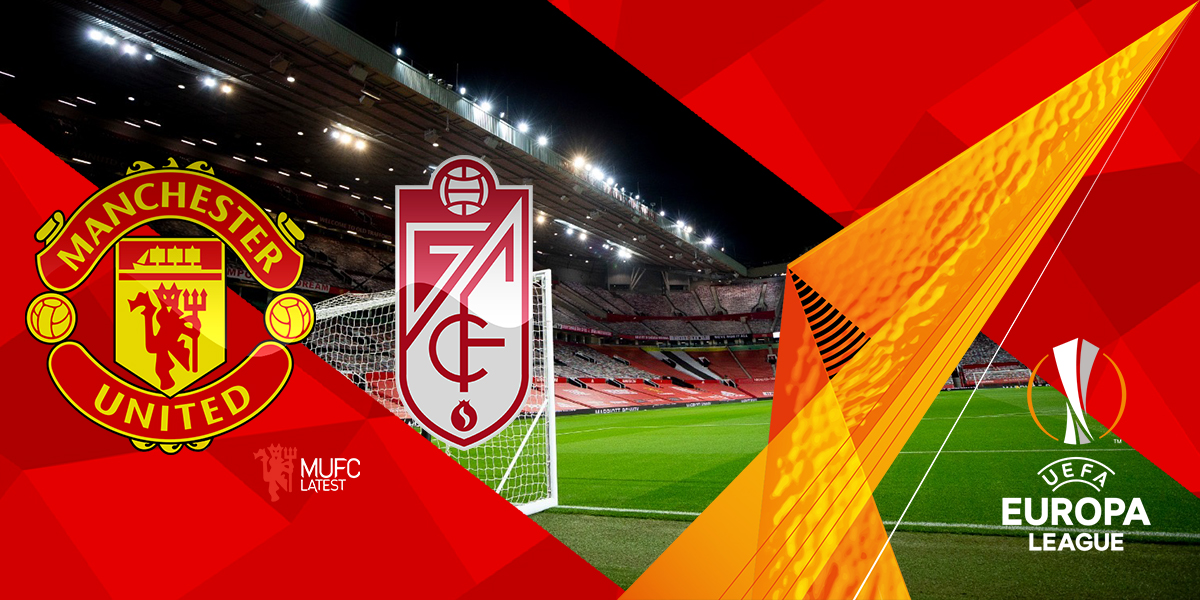
On Thursday evening, Manchester United secured their place in the semi-final of the Europa League after taking advantage of their 2-0 aggregate lead from the first leg. The victory was achieved through a professional performance and as United’s team is vastly superior to that of Granada’s, there was little need for any of the tactical intricacies Ole Gunnar Solskjaer produced against Spurs on Sunday. The game did, however, provide the opportunity to educate on the attacking principles Solskjaer is looking from his team and how the players are starting to show an understanding of these principles.
Before moving onto the game, it is important to have a brief understanding of the five attacking corridors model. As demonstrated in the image below, the common theory applied in top level coaching is there are five vertical corridors in football: the wings, the half spaces, and the centre.
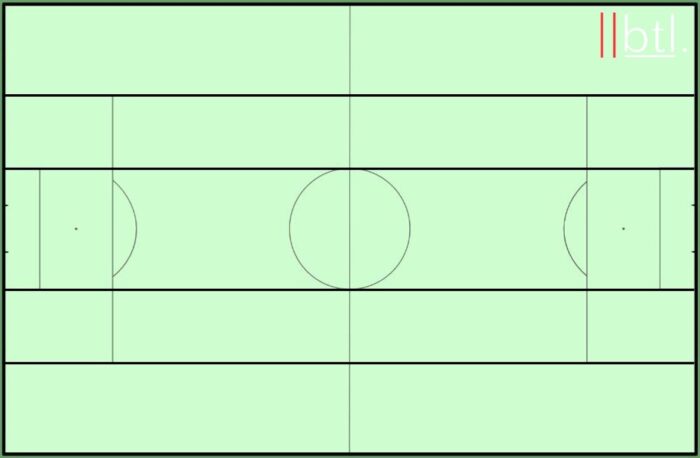
The idea behind these corridors is that teams should look to have one player occupying each of these corridors. These five players will often be positioned between the lines of the opposition defence and midfield. The remaining five outfield players will then usually adopt a “3-2” or a “2-3” type formation in front of the oppositions defence and midfield lines. The tactical differences between the two variances are beyond the scope of this article so let us continue to focus on the attacking five. The idea behind the five corridors is to provide optimal spacing across the width of the pitch to stretch the opposition defensive lines. The five players deeper then move the ball from side to side with the goal of opening one of these corridors and progressing the ball forward through it. Below is an example of how United setup in this formation.
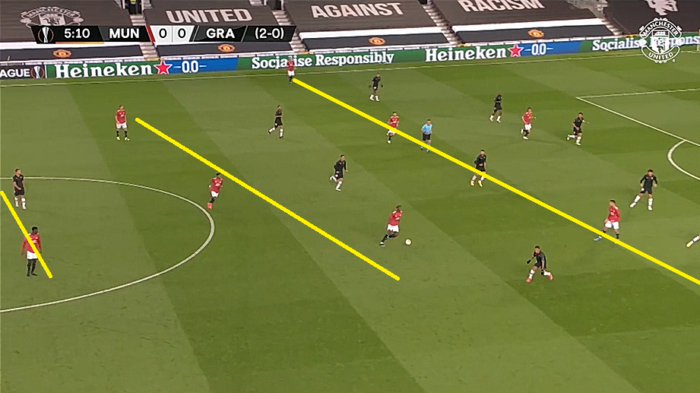
Here, United have adopted a 2-3-5 type formation with Axel Tuanzebe and Victor Lindelof at the back, Nemanja Matic, Fred and Paul Pogba in the middle zone with Alex Telles, Bruno Fernandes, Edinson Cavani, Mason Greenwood and Aaron Wan-Bissaka (on the right, out of shot) as the five most advanced players. To play out the move, Pogba moves the ball into the right-wing corridor to Wan-Bissaka, who then attempts to cross the ball into the three central players, who move into the box in anticipation for the cross.
An important concept of Solskjaer’s tactical theory here is not only to have one player occupying each of these positions, but for the players to rotate within the formation. As seen in the example before, Pogba, who is originally positioned on the left of midfield to primarily occupy the left half space, is found in possession as one of the deeper three midfielders. This then allows Bruno to move into the left half space. In the example below, the players rotate again.
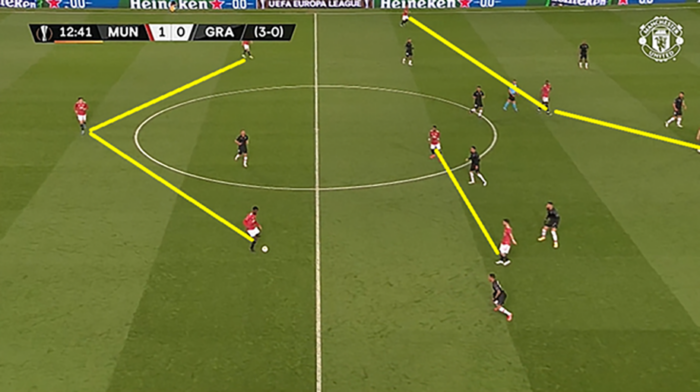
Here, United are now taking up a 3-2-5 type formation, with Matic dropping in as a left centre back. Fernandes has dropped deep to form the middle two with Fred and Pogba is occupying the left half space, with both full backs pushed forward and Cavani and Greenwood out of shot occupying the central and right half space, respectively. As demonstrated, there is an emphasis on the players to interchange positions with the aim of further disorganising the opposition defensive setup and this is what led to the first goal.
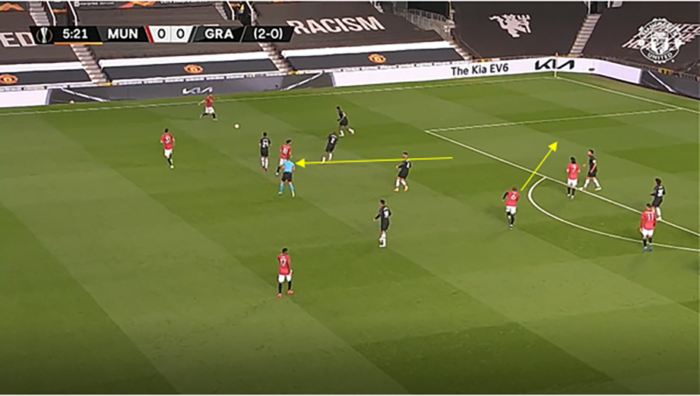
In the above image, Fernandes has moved into the middle zone to join Fred and Matic, drawing the Granada defender (number two) with him and freeing up the left half space. Pogba, who was originally in the box for Wan-Bissaka’s earlier cross attempt, recognises Fernandes’ movement and the space left as a result. Pogba understands it is his responsibility to move forward into the left half space now that Fernandes has moved into the middle zone, whilst also recognising the opportunity to receive the ball in a dangerous position.
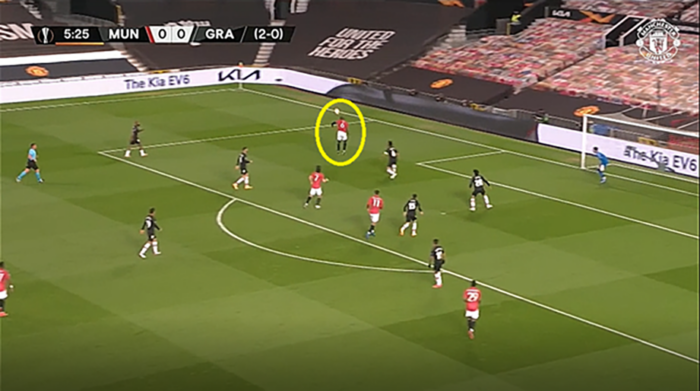
Telles spots Pogba moving into the space created by Fernandes and plays an accurate ball into the space and finds Pogba successfully, who then flicks the ball back to Cavani to strike on the volley and score. It is also important to note the positions of Greenwood and Wan-Bissaka. As the ball was in a crossing position with Telles, Greenwood and Wan-Bissaka have both moved inside, the former to get into the box for an opportunity to score and the latter to pick up any second balls which may arise.
The rotations from the players were a constant feature of United’s play throughout the first half and it became evident the players were starting to form subtle understandings with each other. Pogba in many cases was the catalyst, as he and Fernandes interchanged throughout the half and both had license to roam. Solskjaer has played Pogba in the left midfield role several times this season and before he was substituted at half time, it was clear to see why. Pogba is able to have a greater impact in forward positions coming in from the left and has better prospects to form an understanding with Fernandes, one which United fans have been excited to see develop since Pogba’s return from injury.
When Pogba is played deeper in midfield next to one holder, it makes it harder for him to effectively link up with the forwards and hopefully this article provides a little more insight into the reasons behind that. With Pogba deep, he is unable to occupy positions further forward as there are already too many players rotating between the five forward positions and he is often restricted to operating in the middle zone. He can still be effective here due to his elite passing range but is rarely afforded the opportunity to make the difference in the opposition box, like he did against Granada and also against AC Milan earlier in the competition.
Written by Chris Greening
Discover more from MUFCLatest.com
Subscribe to get the latest posts sent to your email.

